Shilian Zheng
WK-Pnet: FM-Based Positioning via Wavelet Packet Decomposition and Knowledge Distillation
Apr 10, 2025



Abstract:Accurate and efficient positioning in complex environments is critical for applications where traditional satellite-based systems face limitations, such as indoors or urban canyons. This paper introduces WK-Pnet, an FM-based indoor positioning framework that combines wavelet packet decomposition (WPD) and knowledge distillation. WK-Pnet leverages WPD to extract rich time-frequency features from FM signals, which are then processed by a deep learning model for precise position estimation. To address computational demands, we employ knowledge distillation, transferring insights from a high-capacity model to a streamlined student model, achieving substantial reductions in complexity without sacrificing accuracy. Experimental results across diverse environments validate WK-Pnet's superior positioning accuracy and lower computational requirements, making it a viable solution for positioning in real-time resource-constraint applications.
Deep Learning-Based Wideband Spectrum Sensing with Dual-Representation Inputs and Subband Shuffling Augmentation
Apr 10, 2025

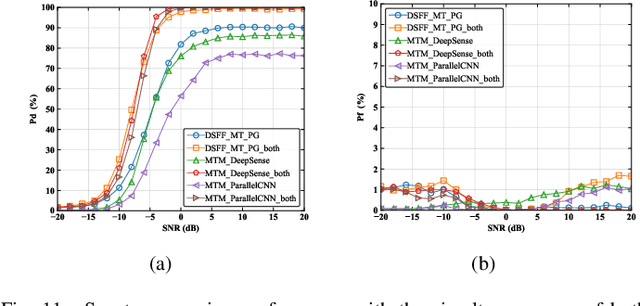

Abstract:The widespread adoption of mobile communication technology has led to a severe shortage of spectrum resources, driving the development of cognitive radio technologies aimed at improving spectrum utilization, with spectrum sensing being the key enabler. This paper presents a novel deep learning-based wideband spectrum sensing framework that leverages multi-taper power spectral inputs to achieve high-precision and sample-efficient sensing. To enhance sensing accuracy, we incorporate a feature fusion strategy that combines multiple power spectrum representations. To tackle the challenge of limited sample sizes, we propose two data augmentation techniques designed to expand the training set and improve the network's detection probability. Comprehensive simulation results demonstrate that our method outperforms existing approaches, particularly in low signal-to-noise ratio conditions, achieving higher detection probabilities and lower false alarm rates. The method also exhibits strong robustness across various scenarios, highlighting its significant potential for practical applications in wireless communication systems.
DS-Pnet: FM-Based Positioning via Downsampling
Apr 10, 2025



Abstract:In this paper we present DS-Pnet, a novel framework for FM signal-based positioning that addresses the challenges of high computational complexity and limited deployment in resource-constrained environments. Two downsampling methods-IQ signal downsampling and time-frequency representation downsampling-are proposed to reduce data dimensionality while preserving critical positioning features. By integrating with the lightweight MobileViT-XS neural network, the framework achieves high positioning accuracy with significantly reduced computational demands. Experiments on real-world FM signal datasets demonstrate that DS-Pnet achieves superior performance in both indoor and outdoor scenarios, with space and time complexity reductions of approximately 87% and 99.5%, respectively, compared to an existing method, FM-Pnet. Despite the high compression, DS-Pnet maintains robust positioning accuracy, offering an optimal balance between efficiency and precision.
Augmenting Radio Signals with Wavelet Transform for Deep Learning-Based Modulation Recognition
Nov 07, 2023Abstract:The use of deep learning for radio modulation recognition has become prevalent in recent years. This approach automatically extracts high-dimensional features from large datasets, facilitating the accurate classification of modulation schemes. However, in real-world scenarios, it may not be feasible to gather sufficient training data in advance. Data augmentation is a method used to increase the diversity and quantity of training dataset and to reduce data sparsity and imbalance. In this paper, we propose data augmentation methods that involve replacing detail coefficients decomposed by discrete wavelet transform for reconstructing to generate new samples and expand the training set. Different generation methods are used to generate replacement sequences. Simulation results indicate that our proposed methods significantly outperform the other augmentation methods.
Mixing Signals: Data Augmentation Approach for Deep Learning Based Modulation Recognition
Apr 05, 2022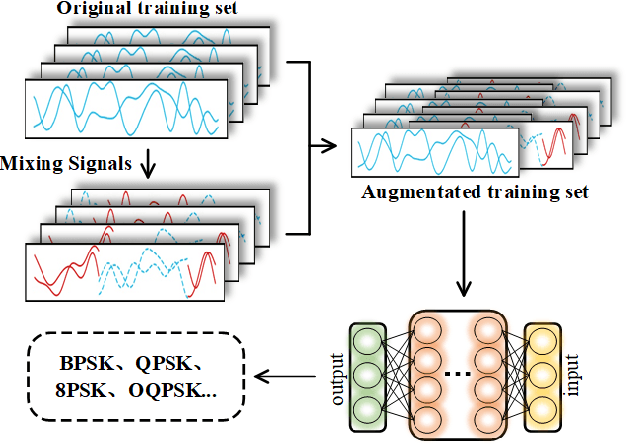
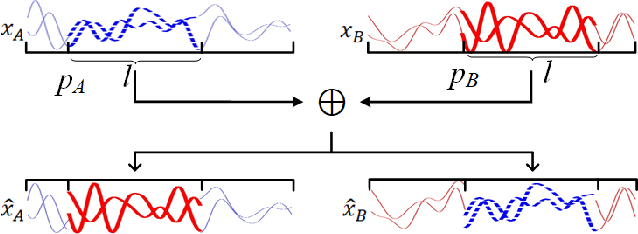
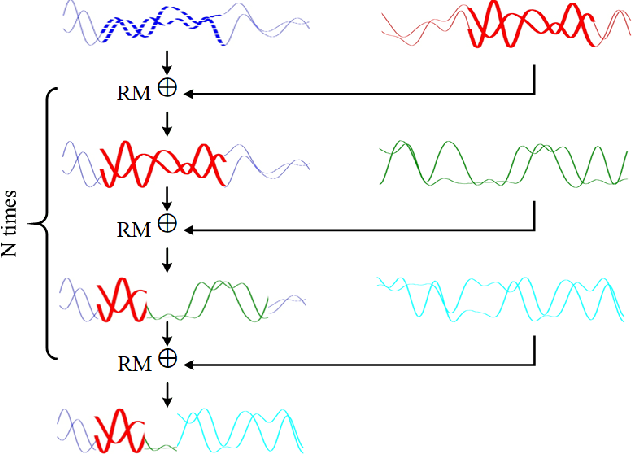
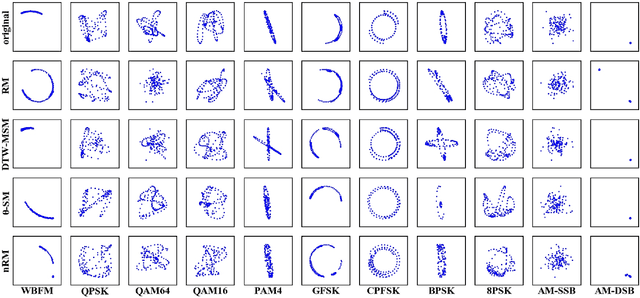
Abstract:With the rapid development of deep learning, automatic modulation recognition (AMR), as an important task in cognitive radio, has gradually transformed from traditional feature extraction and classification to automatic classification by deep learning technology. However, deep learning models are data-driven methods, which often require a large amount of data as the training support. Data augmentation, as the strategy of expanding dataset, can improve the generalization of the deep learning models and thus improve the accuracy of the models to a certain extent. In this paper, for AMR of radio signals, we propose a data augmentation strategy based on mixing signals and consider four specific methods (Random Mixing, Maximum-Similarity-Mixing, $\theta-$Similarity Mixing and n-times Random Mixing) to achieve data augmentation. Experiments show that our proposed method can improve the classification accuracy of deep learning based AMR models in the full public dataset RML2016.10a. In particular, for the case of a single signal-to-noise ratio signal set, the classification accuracy can be significantly improved, which verifies the effectiveness of the methods.
Deep Transfer Clustering of Radio Signals
Jul 26, 2021
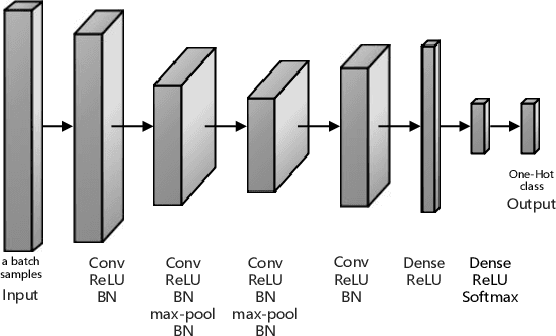


Abstract:Modulation recognition is an important task in radio signal processing. Most of the current researches focus on supervised learning. However, in many real scenarios, it is difficult and cost to obtain the labels of signals. In this letter, we turn to the more challenging problem: can we cluster the modulation types just based on a large number of unlabeled radio signals? If this problem can be solved, we then can also recognize modulation types by manually labeling a very small number of samples. To answer this problem, we propose a deep transfer clustering (DTC) model. DTC naturally integrates feature learning and deep clustering, and further adopts a transfer learning mechanism to improve the feature extraction ability of an embedded convolutional neural network (CNN) model. The experiments validate that our DTC significantly outperforms a number of baselines, achieving the state-of-the-art performance in clustering radio signals for modulation recognition.
Adaptive Visibility Graph Neural Network and its Application in Modulation Classification
Jun 16, 2021
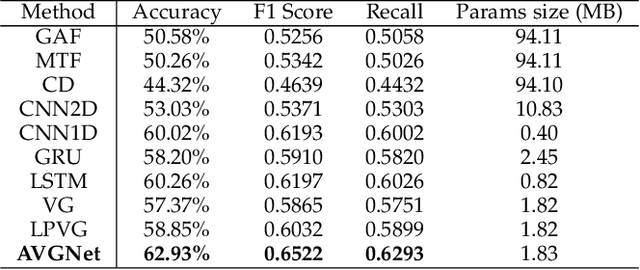

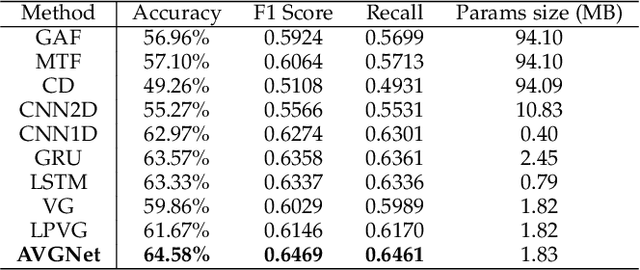
Abstract:Our digital world is full of time series and graphs which capture the various aspects of many complex systems. Traditionally, there are respective methods in processing these two different types of data, e.g., Recurrent Neural Network (RNN) and Graph Neural Network (GNN), while in recent years, time series could be mapped to graphs by using the techniques such as Visibility Graph (VG), so that researchers can use graph algorithms to mine the knowledge in time series. Such mapping methods establish a bridge between time series and graphs, and have high potential to facilitate the analysis of various real-world time series. However, the VG method and its variants are just based on fixed rules and thus lack of flexibility, largely limiting their application in reality. In this paper, we propose an Adaptive Visibility Graph (AVG) algorithm that can adaptively map time series into graphs, based on which we further establish an end-to-end classification framework AVGNet, by utilizing GNN model DiffPool as the classifier. We then adopt AVGNet for radio signal modulation classification which is an important task in the field of wireless communication. The simulations validate that AVGNet outperforms a series of advanced deep learning methods, achieving the state-of-the-art performance in this task.
SigNet: An Advanced Deep Learning Framework for Radio Signal Classification
Oct 28, 2020

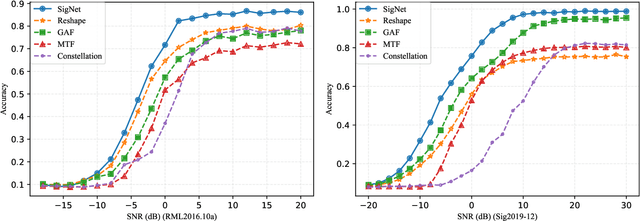
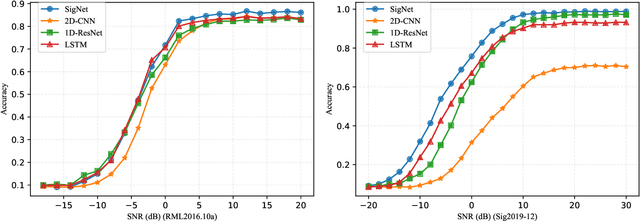
Abstract:Deep learning methods achieve great success in many areas due to their powerful feature extraction capabilities and end-to-end training mechanism, and recently they are also introduced for radio signal modulation classification. In this paper, we propose a novel deep learning framework called SigNet, where a signal-to-matrix (S2M) operator is adopted to convert the original signal into a square matrix first and is co-trained with a follow-up CNN architecture for classification. This model is further accelerated by integrating 1D convolution operators, leading to the upgraded model SigNet2.0. The experiments on two signal datasets show that both SigNet and SigNet2.0 outperform a number of well-known baselines, achieving the state-of-the-art performance. Notably, they obtain significantly higher accuracy than 1D-ResNet and 2D-CNN (at most increasing 70.5\%), while much faster than LSTM (at most saving 88.0\% training time). More interestingly, our proposed models behave extremely well in few-shot learning when a small training data set is provided. They can achieve a relatively high accuracy even when 1\% training data are kept, while other baseline models may lose their effectiveness much more quickly as the datasets get smaller. Such result suggests that SigNet/SigNet2.0 could be extremely useful in the situations where labeled signal data are difficult to obtain.
Spectrum Sensing Based on Deep Learning Classification for Cognitive Radios
Sep 13, 2019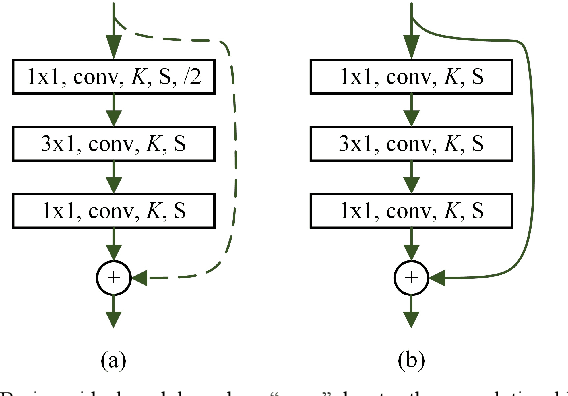
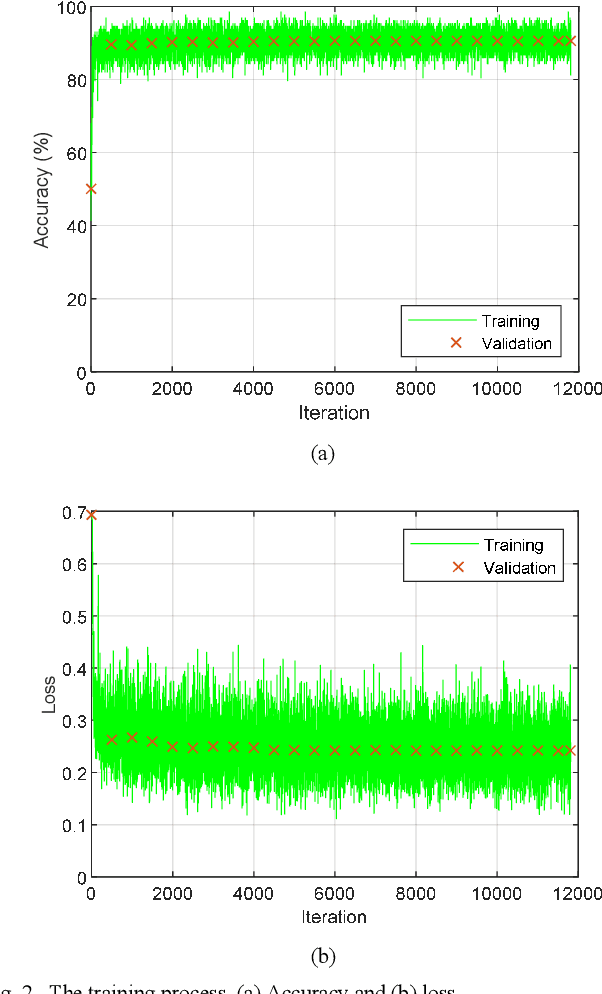
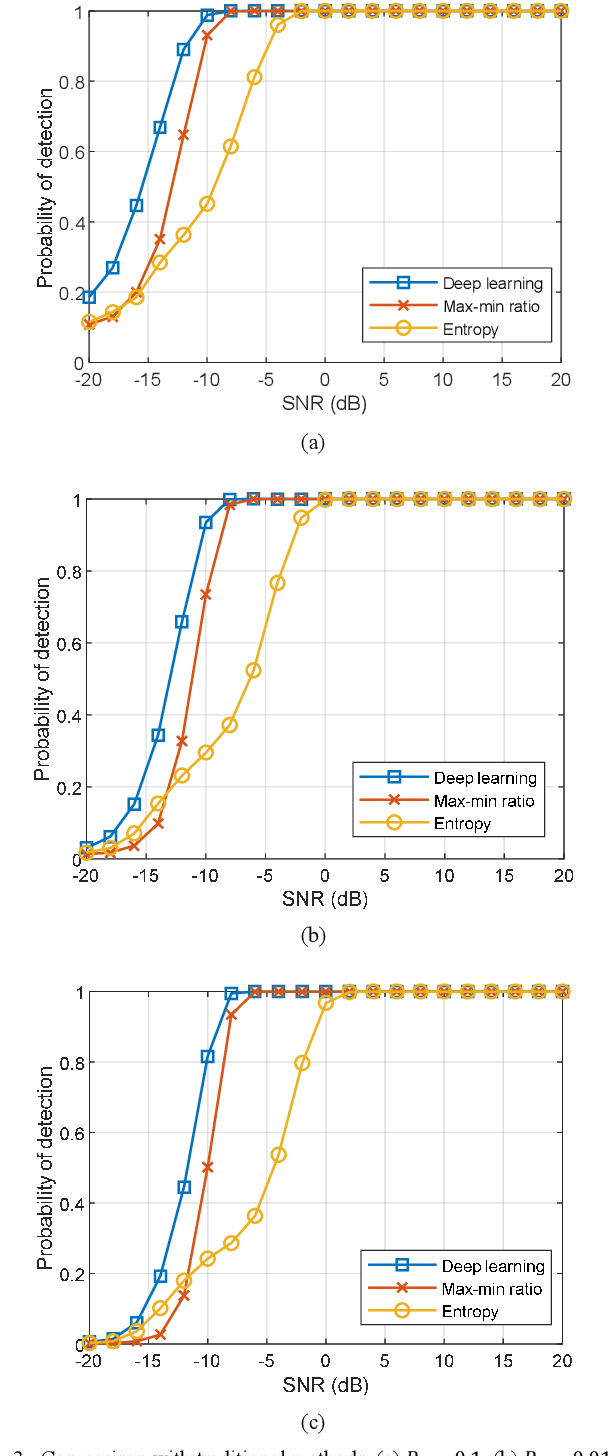
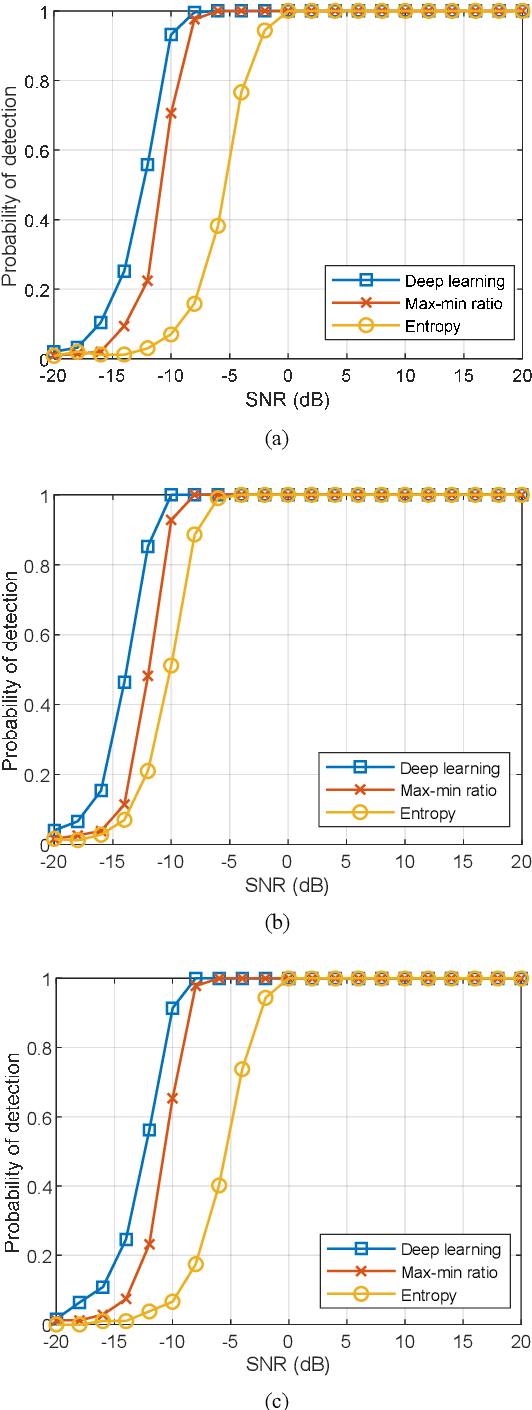
Abstract:Spectrum sensing is a key technology for cognitive radios. We present spectrum sensing as a classification problem and propose a sensing method based on deep learning classification. We normalize the received signal power to overcome the effects of noise power uncertainty. We train the model with as many types of signals as possible as well as noise data to enable the trained network model to adapt to untrained new signals. We also use transfer learning strategies to improve the performance for real-world signals. Extensive experiments are conducted to evaluate the performance of this method. The simulation results show that the proposed method performs better than two traditional spectrum sensing methods, i.e., maximum-minimum eigenvalue ratio-based method and frequency domain entropy-based method. In addition, the experimental results of the new untrained signal types show that our method can adapt to the detection of these new signals. Furthermore, the real-world signal detection experiment results show that the detection performance can be further improved by transfer learning. Finally, experiments under colored noise show that our proposed method has superior detection performance under colored noise, while the traditional methods have a significant performance degradation, which further validate the superiority of our method.
Deep Learning for Large-Scale Real-World ACARS and ADS-B Radio Signal Classification
Apr 20, 2019
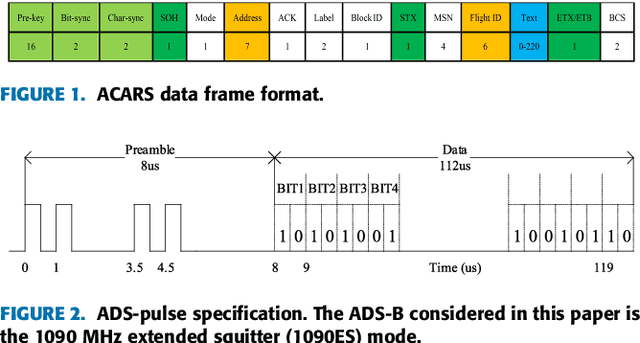

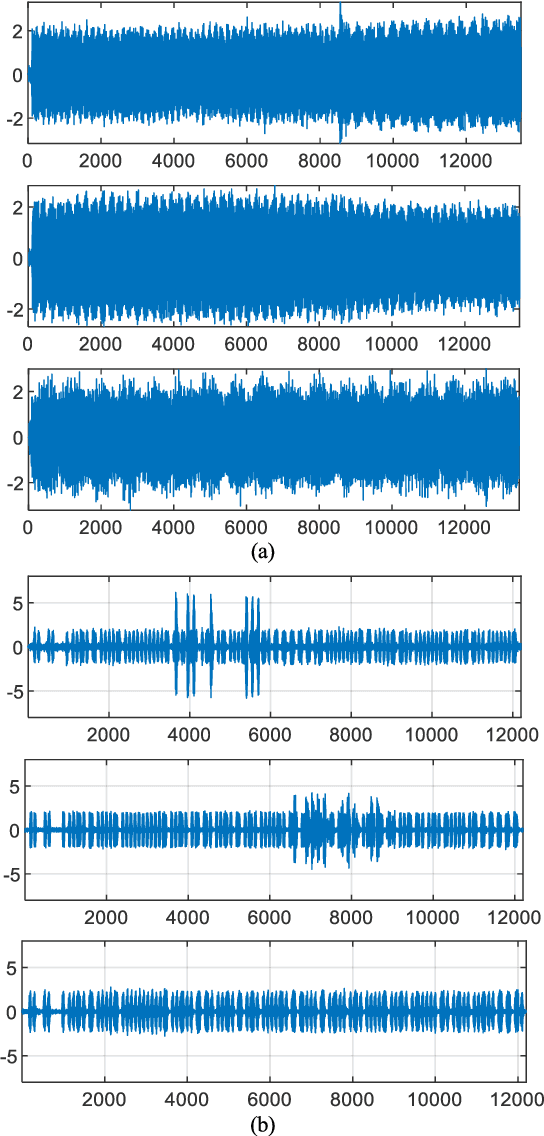
Abstract:Radio signal classification has a very wide range of applications in the field of wireless communications and electromagnetic spectrum management. In recent years, deep learning has been used to solve the problem of radio signal classification and has achieved good results. However, the radio signal data currently used is very limited in scale. In order to verify the performance of the deep learning-based radio signal classification on real radio signal data, in this paper we conduct experiments on large-scale real-world ACARS and ADS-B signal data with sample sizes of 900,000 and 1,300,000, respectively, and with categories of 3,143 and 5,157 respectively. We construct an Inception-Residual neural network model for ACARS signal classification and ADS-B signal classification to verify the ability of a single basic deep neural network model to process different types of radio signals, i.e., communication bursts in ACARS and pulse bursts in ADS-B. Experimental results show that the signal classification accuracy of ACARS and ADS-B is 98.1 and 96.3%, respectively. When the signal-to-noise ratio (with injected additive white Gaussian noise) is greater than 9 dB, the classification accuracy is greater than 92%. These experimental results validate the ability of deep learning to classify large-scale real-world radio signals.
 Add to Chrome
Add to Chrome Add to Firefox
Add to Firefox Add to Edge
Add to Edge